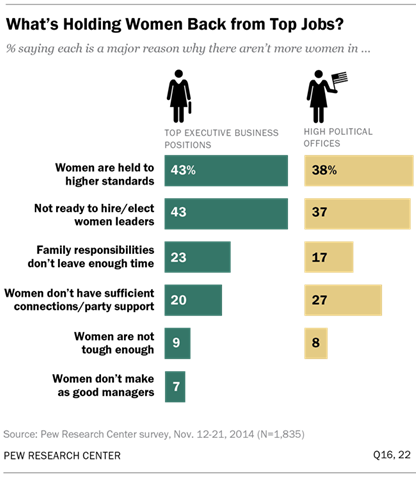By Carol Stubbings
Strategy + Business, March 8, 2018 —
With more women graduating from college than men, and more women pursuing STEM subjects than ever before, we may finally be at a tipping point to start closing the gender gap in the workplace. Of course, the World Economic Forum (WEF) has unfortunately predicted that doing so will take five generations at the current pace. But as we mark International Women’s Day, I’m optimistic. As the leader of a network with revenues of more than US$1.7 billion, and as a mother of three children, I’ve seen how things have changed in the past two decades. And I would suggest we can make progress more quickly than WEF calculates because our conversations about what needs to change are beginning to include key new elements.
The most important of these is a focus on transparency. Most organizations are still far too opaque in their processes, which means all involved, not only women, are left unsure exactly what they have to do to succeed. Organizations need to be clear about what is required to progress and about the exact impact taking time out to have a family or going on flextime for whatever reason will have on careers. These should not be closed-door conversations that lead everyone to think that someone else is getting a better deal.

PWC
Time to talk: What needs to change for women at work, a new piece of research published today by PwC to coincide with 2018’s International Women’s Day, analyzed the results of a survey of 3,627 women around the world, including women at the critical time in their careers where starting a family or taking on caring responsibilities coincides with milestones in career development. It’s part of a series looking at different stages in the careers of women. Of the women in this year’s survey, 58 percent identified the need for greater transparency from their employers to improve career development opportunities.
Let’s start with transparency as it applies to career progression. I have mentored a lot of women and men, and it is almost always the men who are beating down my door asking me about promotions and telling me they are ready, even if they are not.

This fits the stereotype that women believe they have to be 100 percent competent or overqualified to advance, which is backed up by disappointing evidence that in too many cases this is indeed true. In PwC’s survey, only 17 percent of respondents said they would put themselves forward for a promotion if they didn’t think they had all the right skills.
The onus here has to be on the employers to help talented people, be they men or women, reach their potential. And for that to happen, everybody must be clear on the criteria for advancement. Women also need sponsors who will push them when they are ready. At PwC UK, we find that when women enter the process to become partners, for example, they succeed at a greater rate than men because they are much more prepared. The downside is that it takes them longer than men to put themselves forward.
At one of my global banking clients, where there is a commitment to diversity from the very top, many senior leadership roles, including heads of significant geographic regions and top portfolios, are now held by women. There is, however, a dearth of women in the middle management ranks. The challenge is how to fill this gap.

Photograph by Cultura Creative / Alamy
Ensuring greater diversity in promotion panels is a good first step that many companies are beginning to take. Behavioral research shows clearly that people gravitate to those who are most like themselves. Having all-male panels can, for example, disadvantage women applicants. People have to be aware of this type of bias when it comes to identifying the best talent.
When considering promotions into leadership positions, employers also often fail to recognize the kinds of skills that people need at the next level, and focus too much on the skills required of people to do the job they are in. This is particularly true when it comes to technical skills. Leadership roles aren’t necessarily technical in nature. Being an effective leader is not always about how well you can code, or how familiar you are with the intricacies of regulatory regimes, but rather how effectively you collaborate, build teams, and clearly articulate a vision and values. That’s not to buy into more stereotypes that men are better at the hard technical stuff than women. Rather, it’s simply a red flag when thinking about the next steps.
The Caring Penalty
The elephant in the room in the early days of career building for women is often motherhood. And this is where both honesty and transparency are important and where demographics are beginning to make a difference.
It is simply a fact of life that taking time out to have kids puts a gap in a woman’s career progression because she temporarily stops gaining experience. But doing so should not set her back more than the time she is away if employers recognize this for what it is: a normal stage in a person’s professional and personal life journey. Unfortunately, in our survey, 42 percent said they feared the impact having a child would have on their careers and 48 percent of new mothers said they were overlooked for promotion on their return to work.
A career lasts a long time, and given we are all living longer, careers are likely to last a lot longer too: There is no reason women can’t get to the top if they take time out to have children. Today we too often see that the penalty is much bigger that the career gap merits.
When you do leave the workplace for a significant amount of time, it’s easy to lose a bit of confidence; it’s easy to think things will have moved on, or that being out of sight has put you out of mind. I know because I felt that way. But having the confidence to come back and having an employer that embraces your coming back are important factors in propelling careers forward. Returning to the theme of transparency, if there is an open conversation about how this will work, both parties will be better off.
Things will necessarily change in the coming decades for demographic reasons as well. Today we are seeing many more dual-career couples than ever before, with men equally concerned about work–life balance. In the 1960s, a couple typically consisted of a career professional and a homemaker. In the 1970s and 1980s, a man typically was a career professional and his wife likely had a self-described “job.” Since the 1990s, however, it has become ever more common — even usual — for both members of a couple to have careers.
The vast majority of women in this survey who were part of a couple were part of dual-career couples. And, we know that it is no longer the default choice for the woman in a heterosexual couple to be the primary carer for children or the elderly. Employers need to adapt their policies to suit these changes.
It’s hard to predict what the workforce of the future will look like as technology threatens to displace more types of jobs and people are working to a later age. But one thing is clear: Women will be demanding an ever greater say in how their roles are defined and how they can succeed. The men at the top — and it is men, for now — must be part of this important, open conversation.











